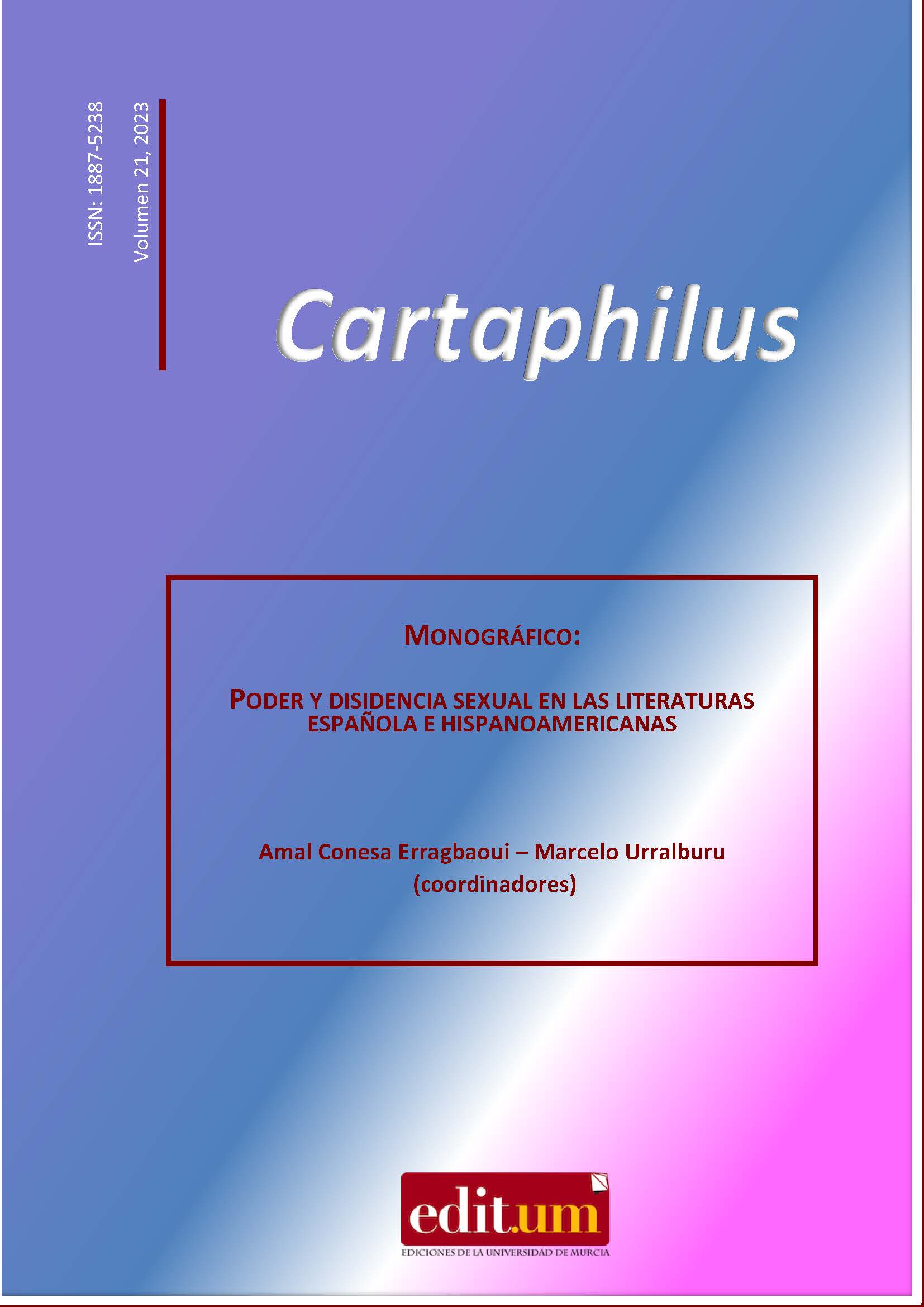The Representation of Merlin in Álvaro Cunqueiro’s 'Merlín e familia'
Abstract
Merlin’s symbolic enrichment achieves such a significance throughout the Arthurian cycle and its medieval stage as to encourage several intertextual transpositions in subsequent narrative structures, reaching our present days, full of literary richness and consequence. A meaningful example arises in Álvaro Cunqueiro’s novel Merlín e familia (1955), the subject of study of this article. Cunqueiro develops the story from the desire to scape reality and seek refuge in the myths and legends of yesteryear. Cunqueiro interconnects these legendary elements through rewriting them into the creation of a new reality. This rework of Merlin has several characteristic traits and roles selected from the medieval figure; nonetheless, he loses altogether other of his original facets, generating a complex Merlin in which the traditional and the modern unite.
Downloads
-
Abstract415
-
.pdf (Español (España))258
References
Alvar, Carlos (1988): Historia de Merlín. Madrid: Siruela.
Álvarez-Faedo, María José (2007): «Charmed by Merlin: History vs. Myth». Novos Caminhos da História e da Cultura, 517-526. Lisboa: APEAA.
Chism, Christine (2014): ««Ain't gonna study war no more»: Geoffrey of Mon-mouth's Historia Regum Britanniae and Vita Merlini». The Chaucer Re-view, 48, nº 4, 457-479. Penn State University Press.
Cruz, Antonio (2006): «El mundo caballeresco medieval en algunas novelas espa-ñolas del siglo XX», 1616: Anuario de la Sociedad Española de Literatura General y Comparada. Anuario XII, 97-106. Alicante: Biblioteca Virtual Miguel de Cervantes.
Cunqueiro, Álvaro (2003): Merlín e familia. Madrid: El País.
García Gual, Carlos (1974): Primeras novelas europeas. Madrid: Ediciones IST-MO.
Felpeto Lagoa, Matilde (1971): «Arredor de Merlín e familia». Grial, 33, 358-362. Vigo: Editorial Galaxia S.A.
Gutiérrez, Santiago (1999): Merlín y su historia. Madrid: Alianza Editorial.
Kristeva, Julia (1974): El texto de la novela. Barcelona: Editorial Lumen.
Mariño Mexuto, Marta (2021): A reescritura do mito na novelística de materia clásica de Álvaro Cunqueiro. Tesis doctoral. Universidad de Santiago de Compostela.
Markale, Jean (1981): Merlin l’enchanteur ou l’éternelle quête magique. Paris: Éditions RETZ.
Micha, Alexandre (1980): Étude sur le «Merlin» de Robert de Boron. Genève: Librairie Droz S.A.
Monmouth, Geoffrey (1987): The History of the Kings of Britain. Harmondsworth: Penguin Books.
Pérez Abellán, María Encarnación (2012): «Pervivencia y renovación del ciclo artúrico en la prosa española contemporánea. Merlín: de Monmouth a Jarnés, Cunqueiro y Díaz-Mas», (Coord. por A. Martínez Pérez y A. L. Ba-quero Escudero). Estudios de literatura medieval. Murcia: 25 años de la Asociación Hispánica de Literatura Medieval, 677-682.
Pérez-Bustamante, Ana Sofía (1989): «Álvaro Cunqueiro: El eterno retorno del chaman». Draco, 1, 101-118. Cádiz: Universidad de Cádiz, Servicio de Pu-blicaciones.
Poirion, Daniel (1981): «Écriture et ré-écriture au Moyen Âge". Littérature, n° 41: Intertextualité et roman en France, au Moyen Âge, 109-118. Paris: Ar-mand Colin.
Riga, Frank (2008): «Gandalf and Merlin: J.R.R. Tolkien’s Adoption and Transfor-mation of a Literary Tradition». Mythlore, 27, 21-44. East Lansing: Mythopoeic Society.
Copyright (c) 2024 Claudia Carrión Molina

This work is licensed under a Creative Commons Attribution-NonCommercial-NoDerivatives 4.0 International License.
Works published in this journal are subject to the following terms:
1. The Servicio de Publicaciones of the University of Murcia (the publisher) reserves the copyright of the published works and encourages and allows their reuse under the usage licence indicated in point
© Servicio de Publicaciones, Universidad de Murcia, 2015
2. Works are published in the electronic edition of the journal under a Creative Commons Reconocimiento-NoComercial-SinObraDerivada 4.0 International licence (legal text). They may be copied, used, disseminated, transmitted and publicly displayed, on condition that: i) the author and original source of the publication are cited (journal, publisher and URL of the work); ii) the material is not used for commercial purposes; iii) the existence and specifications of this licence for use are mentioned.

3. Self-archiving conditions We allow and encourage authors to electronically disseminate the preprint versions (the pre-review version) and/or post print (the version that has been reviewed and accepted for publication) of their works before they are published as this encourages earlier circulation and dissemination and so a potential increase in their citation and impact in the academic community.




